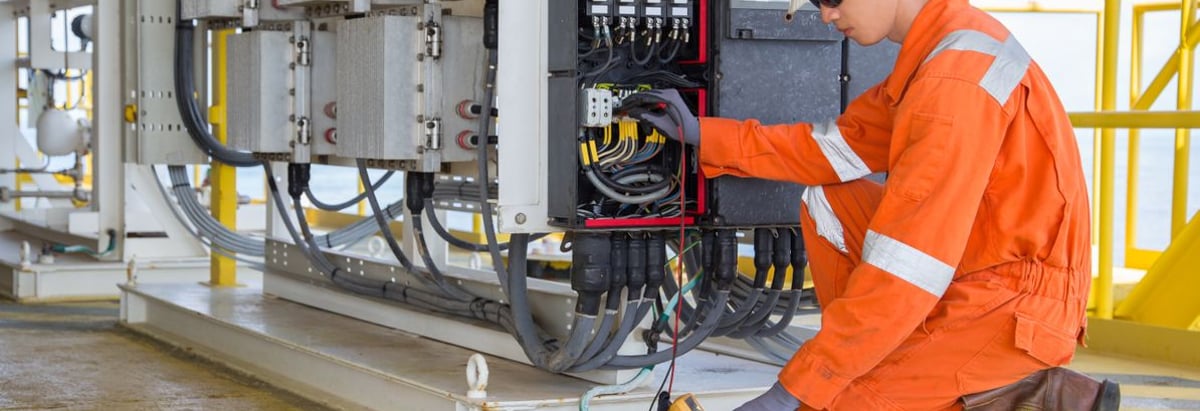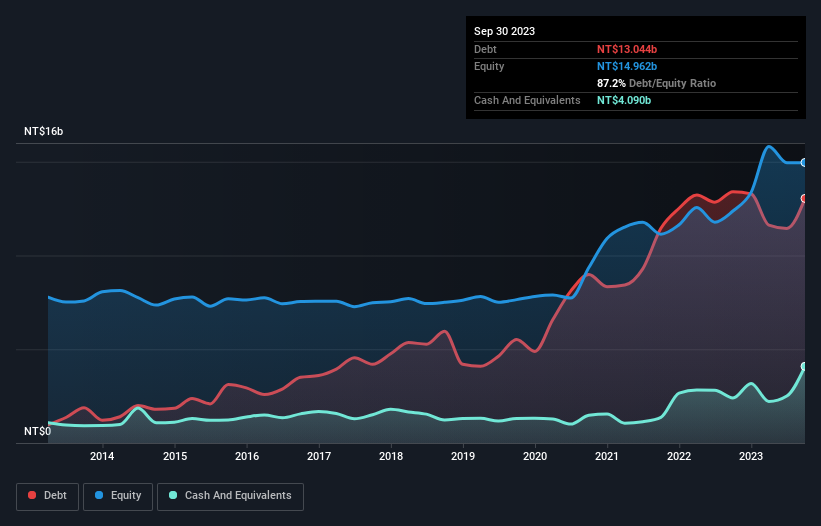- Taiwan
- /
- Electrical
- /
- TWSE:1513
Is Chung-Hsin Electric and Machinery Manufacturing (TWSE:1513) A Risky Investment?

The external fund manager backed by Berkshire Hathaway's Charlie Munger, Li Lu, makes no bones about it when he says 'The biggest investment risk is not the volatility of prices, but whether you will suffer a permanent loss of capital.' When we think about how risky a company is, we always like to look at its use of debt, since debt overload can lead to ruin. We note that Chung-Hsin Electric and Machinery Manufacturing Corp. (TWSE:1513) does have debt on its balance sheet. But is this debt a concern to shareholders?
What Risk Does Debt Bring?
Generally speaking, debt only becomes a real problem when a company can't easily pay it off, either by raising capital or with its own cash flow. If things get really bad, the lenders can take control of the business. However, a more usual (but still expensive) situation is where a company must dilute shareholders at a cheap share price simply to get debt under control. By replacing dilution, though, debt can be an extremely good tool for businesses that need capital to invest in growth at high rates of return. When we think about a company's use of debt, we first look at cash and debt together.
Check out our latest analysis for Chung-Hsin Electric and Machinery Manufacturing
What Is Chung-Hsin Electric and Machinery Manufacturing's Debt?
As you can see below, Chung-Hsin Electric and Machinery Manufacturing had NT$13.0b of debt, at September 2023, which is about the same as the year before. You can click the chart for greater detail. On the flip side, it has NT$4.09b in cash leading to net debt of about NT$8.95b.

How Healthy Is Chung-Hsin Electric and Machinery Manufacturing's Balance Sheet?
The latest balance sheet data shows that Chung-Hsin Electric and Machinery Manufacturing had liabilities of NT$15.7b due within a year, and liabilities of NT$14.0b falling due after that. On the other hand, it had cash of NT$4.09b and NT$6.48b worth of receivables due within a year. So its liabilities outweigh the sum of its cash and (near-term) receivables by NT$19.1b.
While this might seem like a lot, it is not so bad since Chung-Hsin Electric and Machinery Manufacturing has a market capitalization of NT$70.7b, and so it could probably strengthen its balance sheet by raising capital if it needed to. But we definitely want to keep our eyes open to indications that its debt is bringing too much risk.
We use two main ratios to inform us about debt levels relative to earnings. The first is net debt divided by earnings before interest, tax, depreciation, and amortization (EBITDA), while the second is how many times its earnings before interest and tax (EBIT) covers its interest expense (or its interest cover, for short). This way, we consider both the absolute quantum of the debt, as well as the interest rates paid on it.
Chung-Hsin Electric and Machinery Manufacturing's net debt to EBITDA ratio of about 1.7 suggests only moderate use of debt. And its strong interest cover of 21.1 times, makes us even more comfortable. It is well worth noting that Chung-Hsin Electric and Machinery Manufacturing's EBIT shot up like bamboo after rain, gaining 50% in the last twelve months. That'll make it easier to manage its debt. There's no doubt that we learn most about debt from the balance sheet. But it is future earnings, more than anything, that will determine Chung-Hsin Electric and Machinery Manufacturing's ability to maintain a healthy balance sheet going forward. So if you're focused on the future you can check out this free report showing analyst profit forecasts.
Finally, a company can only pay off debt with cold hard cash, not accounting profits. So we clearly need to look at whether that EBIT is leading to corresponding free cash flow. During the last three years, Chung-Hsin Electric and Machinery Manufacturing produced sturdy free cash flow equating to 65% of its EBIT, about what we'd expect. This free cash flow puts the company in a good position to pay down debt, when appropriate.
Our View
The good news is that Chung-Hsin Electric and Machinery Manufacturing's demonstrated ability to cover its interest expense with its EBIT delights us like a fluffy puppy does a toddler. And the good news does not stop there, as its EBIT growth rate also supports that impression! Looking at the bigger picture, we think Chung-Hsin Electric and Machinery Manufacturing's use of debt seems quite reasonable and we're not concerned about it. While debt does bring risk, when used wisely it can also bring a higher return on equity. The balance sheet is clearly the area to focus on when you are analysing debt. However, not all investment risk resides within the balance sheet - far from it. These risks can be hard to spot. Every company has them, and we've spotted 4 warning signs for Chung-Hsin Electric and Machinery Manufacturing you should know about.
When all is said and done, sometimes its easier to focus on companies that don't even need debt. Readers can access a list of growth stocks with zero net debt 100% free, right now.
If you're looking to trade Chung-Hsin Electric and Machinery Manufacturing, open an account with the lowest-cost platform trusted by professionals, Interactive Brokers.
With clients in over 200 countries and territories, and access to 160 markets, IBKR lets you trade stocks, options, futures, forex, bonds and funds from a single integrated account.
Enjoy no hidden fees, no account minimums, and FX conversion rates as low as 0.03%, far better than what most brokers offer.
Sponsored ContentNew: AI Stock Screener & Alerts
Our new AI Stock Screener scans the market every day to uncover opportunities.
• Dividend Powerhouses (3%+ Yield)
• Undervalued Small Caps with Insider Buying
• High growth Tech and AI Companies
Or build your own from over 50 metrics.
Have feedback on this article? Concerned about the content? Get in touch with us directly. Alternatively, email editorial-team (at) simplywallst.com.
This article by Simply Wall St is general in nature. We provide commentary based on historical data and analyst forecasts only using an unbiased methodology and our articles are not intended to be financial advice. It does not constitute a recommendation to buy or sell any stock, and does not take account of your objectives, or your financial situation. We aim to bring you long-term focused analysis driven by fundamental data. Note that our analysis may not factor in the latest price-sensitive company announcements or qualitative material. Simply Wall St has no position in any stocks mentioned.
About TWSE:1513
Chung-Hsin Electric and Machinery Manufacturing
Chung-Hsin Electric and Machinery Manufacturing Corp.
Very undervalued with solid track record and pays a dividend.
Similar Companies
Market Insights
Community Narratives


